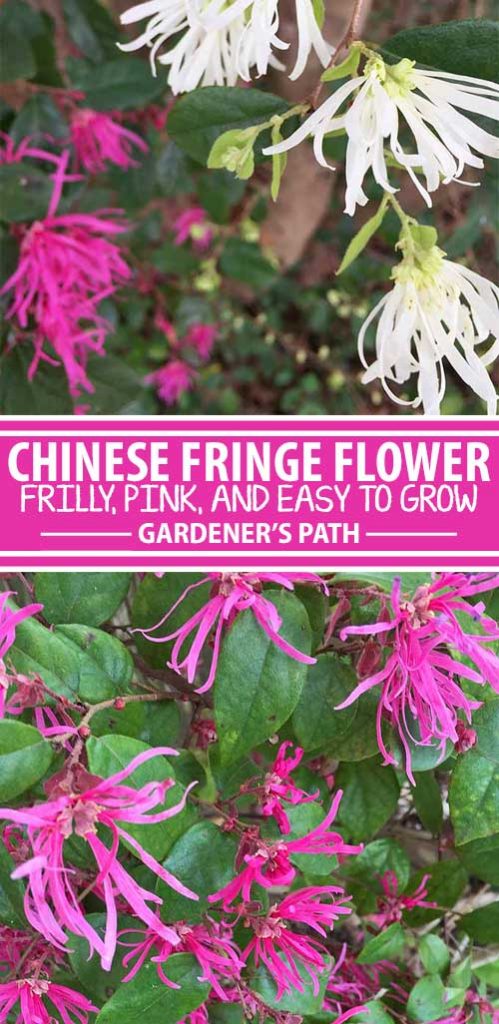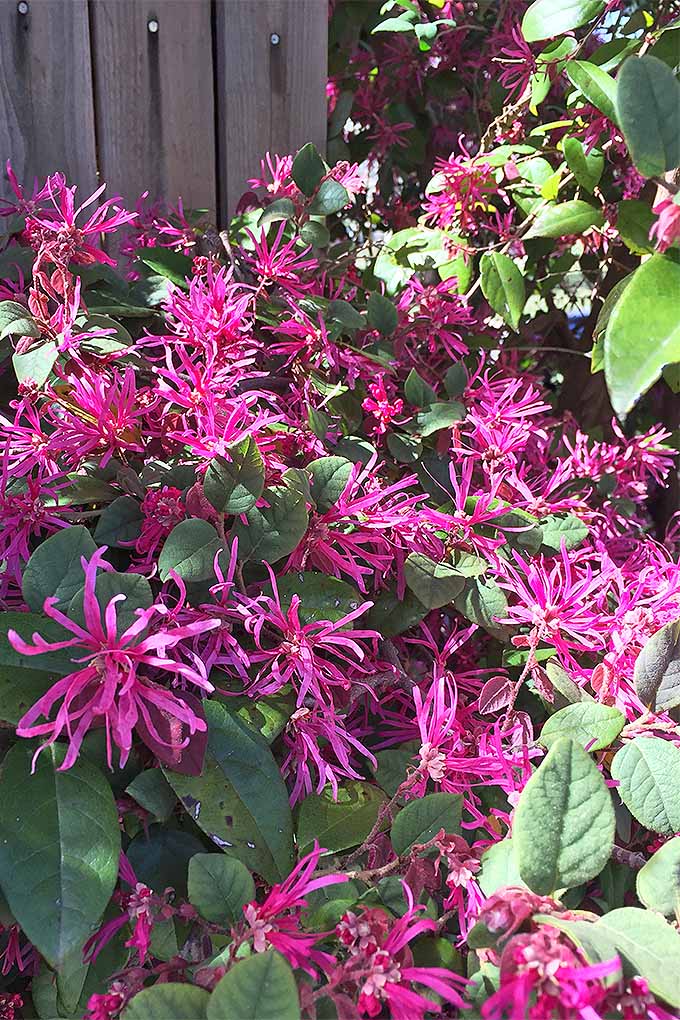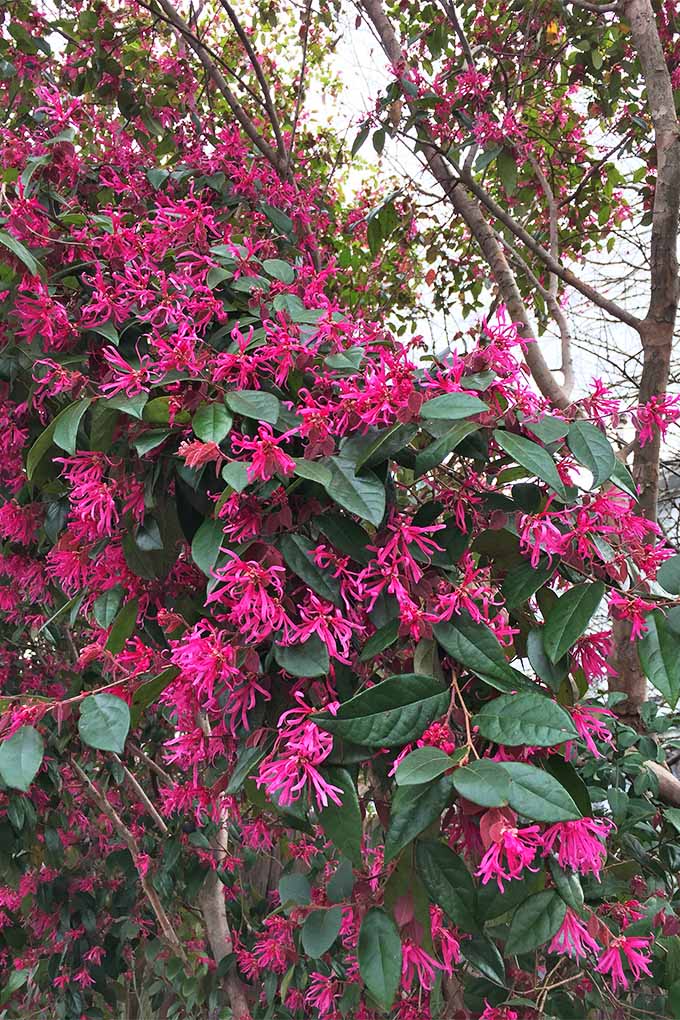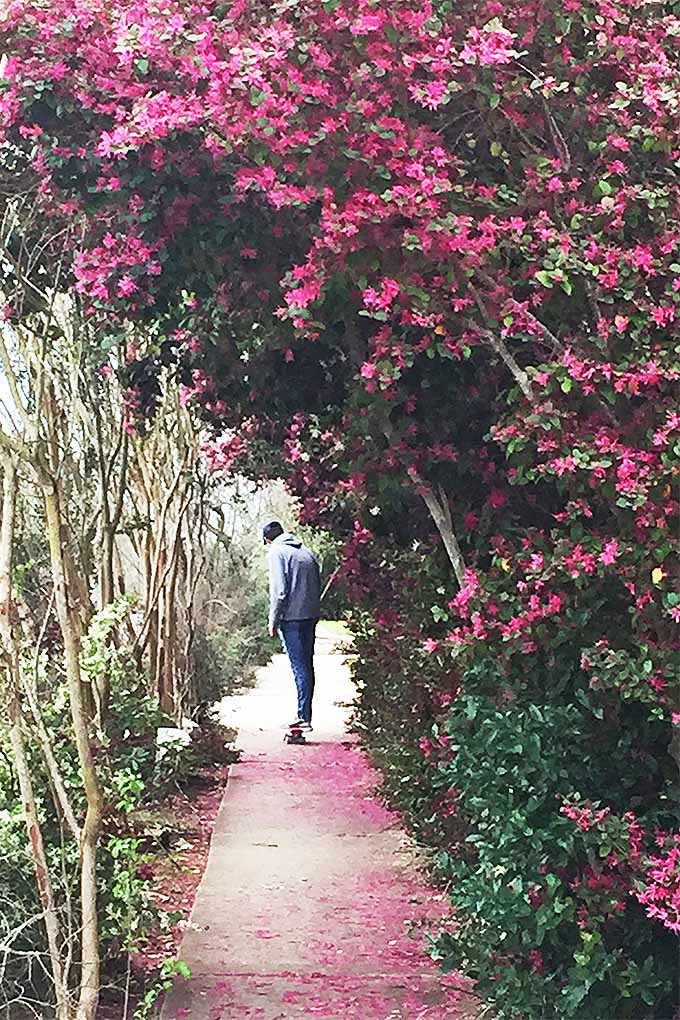In addition to its attractive deep red leaves, this fast-growing plant puts on a breathtaking springtime display of fringy pink or white flowers. The plant — mostly with white blooms — didn’t have much of a presence in the United States until the mid ‘90s, when nurseries began marketing varieties with pink blooms. Now it is ubiquitous in much of the South. We link to vendors to help you find relevant products. If you buy from one of our links, we may earn a commission. Some cultivars are trimmed into bonsai.
A Top-Queried Plant
While I’ve been out working in the yard this spring, numerous neighbors have stopped and asked, “What is this beautiful pink tree?” Its gorgeous, frilly pink flowers are numerous and truly showstopping. It’s too bad they only last for a couple of weeks! But they do live on a while longer in a pretty pink carpet on the ground where they fall. Emergent spring leaf growth is attractive, too — in hues of saturated red. At other times of the year, the leaves can range from a deep green to a deep plum, often with multiple colors on a single stem. It’s commonly regarded as hardy in zones 8-10, though some gardeners as far north as zone 7 have had luck with it.
Acidic or Not?
This shrub will do well in full sun or partial shade. ‘Ruby’ Chinese Fringe Flower You’ll get a one-gallon potted plant that will produce a shrub that is 4 to 5 feet tall by 3 to 4 feet wide when mature. Loropetalum ‘Purple Majesty’ Chinese Fringe You’ll receive a two-gallon potted plant. ‘Jazz Hands’ Dwarf White Chinese Fringe Flower You’ll get a plant in a 4-inch pot that will grow to be 1 to 3 feet tall. ‘Hillier Compacta’ is a spreading form that can be used as a ground cover. It has small white flowers. Like many plants, it prefers rich soil, but will tolerate clay. Mine are in whatever nasty builder dirt was in place after my house was built. Just be sure you place it in an area where the soil isn’t boggy. The literature will tell you this plant prefers acidic soil, but the soil in Central Texas is notoriously alkaline, and fringe flowers thrive all over the place here. You can find seeds for Loropetalum chinense online, but if you want to get something with some heft in your landscape quickly, and you don’t need 100 shrubs, I recommend you purchase an established plant in a one-gallon bucket or larger. To transplant, dig a hole about fifty percent wider than the root ball and about the same depth as the pot you’re moving it from. Place the plant in the hole and backfill with the soil you removed to dig the hole. Water well. Need a little more detail? Check here for more on planting trees and shrubs.
Start Your Own
If you’re like my neighbor Louie, you can transplant a piece of driftwood and it will sprout. Luckily, propagating from fringe flower cuttings is much easier than trying to get something to grow from an old piece of driftwood. Here’s what you need to do:
- Take a 6-inch cutting of new growth softwood, and remove the leaves along the bottom half of the stem.
- Dip the end of the cutting into a rooting medium — 0.1 to 0.3% works well. Prepare a clean container with drainage holes and a half-and-half mixture of peat and perlite. Poke a hole in the dirt and insert the cutting.
- Cover with a plastic dome or a plastic bag that doesn’t touch the cutting. Keep the soil moist, but not soggy. Place the container in indirect sunlight. Your plant should have a nice set of roots in four to six weeks. Let the plant grow in its container until the next planting season, depending on your climate. Then transplant into the garden. One caveat: Now that we’ve told you all this, please be aware that some cultivars are patented and taking cuttings this way could be a violation of said patent. If you know what type of plant you have, you can look online to ascertain its legal status.
Tunnel of Carefree Love
Loropetalum is extremely drought tolerant. During the hot Texas summers, ours get no supplemental water. They often go weeks without water, in fact. This plant is tolerant of pretty much any kind of pruning. Many gardeners prune them into shrubs and even hedges; others let them grow into a tree form. When we built our house 15 years ago, the builder installed 2-foot-tall shrubs to meet HOA-mandated fence camouflage guidelines. In just a couple years, the plants had grown to overshadow the 6-foot fence. Now they’re about 15 feet tall, trimmed to arc over the sidewalk, and forming one half of a “tunnel” that the neighborhood children love. We have to cut them back frequently and severely to keep them off the sidewalk, but the trees don’t mind at all. They just keep coming back. I’ve never fertilized my fringies, but if yours look like they could use a little nutrition, apply a 16-4-8 mix before the spring growth spurt. They do appreciate a layer of mulch as well.
Oh, the Gall…
Loropetalum has few serious pest or disease problems. However, root rot can be an issue, especially in poorly drained soils, so just make sure you put your plants in well-draining soil. You may see galls on the stems of these shrubs, and the presence of Pseudomonas savastanoi bacteria is to blame for these swellings. If you see them when you’re shopping, do not purchase the plant. If you find them on established plants in your yard, cut the branch several inches above the gall, dispose of the prunings, and disinfect your pruners.
Little Effort, Many Returns
Easy-care and easy on the eye, this shrub/tree is a fast-growing and gorgeous addition to many gardens. Mine get no supplemental water, no fertilizer, no pest maintenance, and fairly brutal prunings. And yet, they reward with dense foliage and a dazzling spring display. Show of hands: Who’s heard of Chinese fringe flower? Who has it growing in their garden? Southerners, are you inspired to try this pink beauty in your landscape? And if you’d like to learn about other drought resistant landscape shrubs, check out some of our other guides:
How to Grow Texas Mountain Laurel How to Grow Turpentine Bush: the Desert Dazzler How to Grow and Care for Spirea Bushes
Photos by Gretchen Heber © Ask the Experts, LLC. ALL RIGHTS RESERVED. See our TOS for more details. Product photos via Pixies Garden, Bob Wells Nursery, Proven Winners.













